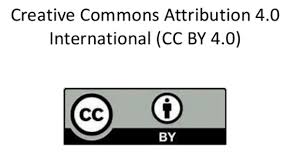Biosynthesis of Ag, Fe₂O₃, and hybrid Ag/Fe₂O₃ nanoparticles using clove (Syzygium aromaticum): A study on phytochemicals, antioxidant capacity, and antibacterial properties
DOI:
https://doi.org/10.47440/jafe.2025.6205Keywords:
Green synthesis, Silver nanoparticles, Iron oxide nanoparticles, Hybrid nanoparticles, Clove extract, Phytochemicals, Antioxidant activity, Antibacterial propertiesAbstract
In this work, the green synthesis of silver (Ag), iron oxide (Fe2O3), and Ag/Fe2O3 nanoparticles (NPs) was performed from the use of clove (Syzygium aromaticum) extract as a natural bioreducing and stabilizing agent. The rich content of clove extract by phytochemical components enables the successful transformation of metal ions into metal/metal oxide nanoparticles. The morphology characterization, functional groups, optical properties, and stability of the synthesized nanoparticles were investigated. The extract was recovered in part in the nanomaterials as revealed by phytochemical analysis, which detected phenolics (320.614 mg GAE/g), flavonoids (46.455 mg CE/g), and tannins (10.144 mg TAE/g). DPPH antioxidant activity showed strong radical scavenging capacity, showing an IC50 of 0.0098 from Ag/Fe2O3 NPs. This was almost equal to clove extract (0.0097 mg/mL) and far better than control ascorbic acid (0.0222 mg/mL). The antibacterial activity was found to be true against Gram-positive and Gram-negative bacteria. Ag/Fe2O3 NPs exhibited the widest spectrum and the greatest inhibition zones, largely against S. aureus (21±1.41 mm), K. pneumoniae (20±1.16 mm), and S. typhimurium (19±1.57 mm), as effective as or better than Azithromycin. The deposited results indicate that S. aromaticum is a potential in situ bioresource for multifaceted nanoparticle synthesis with high antioxidant and antimicrobial activity.






 Publisher:
Publisher: 